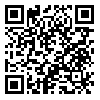Volume 6, Issue 1 (19 2006)
ijdld 2006, 6(1): 9-16 |
Back to browse issues page
Download citation:
BibTeX | RIS | EndNote | Medlars | ProCite | Reference Manager | RefWorks
Send citation to:



BibTeX | RIS | EndNote | Medlars | ProCite | Reference Manager | RefWorks
Send citation to:
Mirzaei H, Golmohammadi T, Akrami S M, Doosti M, Nakhjavani M, Heshmat R et al . ASSOCIATION STUDY OF POLYMORPHISM OF THE PPAR-γ2 GENE AND OBESITY. ijdld 2006; 6 (1) :9-16
URL: http://ijdld.tums.ac.ir/article-1-332-en.html
URL: http://ijdld.tums.ac.ir/article-1-332-en.html
Hassan Mirzaei 
 , Taghi Golmohammadi *
, Taghi Golmohammadi * 
 1, Seyed Mohammad Akrami
1, Seyed Mohammad Akrami 
 , Mahmood Doosti
, Mahmood Doosti 
 , Manochehr Nakhjavani
, Manochehr Nakhjavani 
 , Ramin Heshmat
, Ramin Heshmat 
 , Parvin Amiri
, Parvin Amiri 


 , Taghi Golmohammadi *
, Taghi Golmohammadi * 
 1, Seyed Mohammad Akrami
1, Seyed Mohammad Akrami 
 , Mahmood Doosti
, Mahmood Doosti 
 , Manochehr Nakhjavani
, Manochehr Nakhjavani 
 , Ramin Heshmat
, Ramin Heshmat 
 , Parvin Amiri
, Parvin Amiri 

Abstract: (9507 Views)
Background: Peroxisome Proliferators- Activated Receptor-Gamma2 (PPAR- γ2) is a nuclear receptor that regulates adipocyte differentiation, lipid metabolism and insulin sensitivity. The aim of this study was to evaluate the association of the Pro12Ala polymorphism at the PPAR- γ2 gene in Iranian population with obesity.
Methods: The genomic DNAs of the 156 subjects including obese and healthy isolated from EDTA whole blood. Pro12Ala polymorphism detected by Polymerase Chain Reaction – Restriction Fragment Length polymorphism (PCR-RFLP).
Results: In the obese group , one sample (1.3%) was as homozygote Ala/Ala genotype , 24 samples (30.8%) were Pro/Ala heterozygote and 53 samples (67.9%)as Pro/Pro genotype were identified . in the control group , one sample (1.3%) was as Ala/Ala genotype , 12 samples (15.4%) were Pro/Ala genotype and 65 samples (83.3%) were Pro/Pro genotype. allele frequencies of Ala in obese subjects (qAla=%16.7)were significantly different from those in control subjects (qAla=%8.9).
Conclusion: Our results revealed that Pro12Ala polymorphism in PPAR- γ2 gene associated with obesity in the Iranian population and presence Ala allele cause to significantly higher BMI and lower fasting blood sugar.
Methods: The genomic DNAs of the 156 subjects including obese and healthy isolated from EDTA whole blood. Pro12Ala polymorphism detected by Polymerase Chain Reaction – Restriction Fragment Length polymorphism (PCR-RFLP).
Results: In the obese group , one sample (1.3%) was as homozygote Ala/Ala genotype , 24 samples (30.8%) were Pro/Ala heterozygote and 53 samples (67.9%)as Pro/Pro genotype were identified . in the control group , one sample (1.3%) was as Ala/Ala genotype , 12 samples (15.4%) were Pro/Ala genotype and 65 samples (83.3%) were Pro/Pro genotype. allele frequencies of Ala in obese subjects (qAla=%16.7)were significantly different from those in control subjects (qAla=%8.9).
Conclusion: Our results revealed that Pro12Ala polymorphism in PPAR- γ2 gene associated with obesity in the Iranian population and presence Ala allele cause to significantly higher BMI and lower fasting blood sugar.
Type of Study: Research |
Subject:
General
Received: 2006/04/30 | Accepted: 2006/12/6 | Published: 2013/10/3
Received: 2006/04/30 | Accepted: 2006/12/6 | Published: 2013/10/3
| Rights and permissions | |
 |
This work is licensed under a Creative Commons Attribution-NonCommercial 4.0 International License. |



